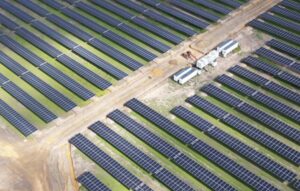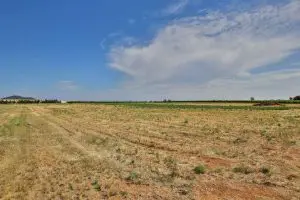Your analyst thinks the Clean Energy Council list of forthcoming projects is great, but a number of the bigger projects are yet to secure grid connections, financing, or revenue contracts and so still have some way to go before they can proceed. So we aren’t quite as optimistic as the CEC.
However, even our list can easily produce up to about $20 billlion of projects either already in commissioning or definitely under construction. This is the largest quantity of electricity investment probably in the last 30 years and its been produced when demand is as flat as a pancake.
The investment has occurred because electricity and REC (renewable energy certificate( prices were high. At one stage $80/MWh for an REC and $100/MWh for black electricity. That was a pretty big incentive and the market responded.
Prices were high because previously the market was in oversupply, prices fell and eventually large lumps of coal and gas capacity were withdrawn from service.
Anyone else seeing the pattern here? This ladies and gentlemen, boys and girls and distinguished political guests, was the market at work.
And, not only has the market worked to produce new investment but it has also worked to produce more competition.
This is because the big gentailers have no more control over when wind and solar plants operate than anyone else. By definition they operate as available. When they operate they reduce the market share available to other forms of generation. Corporate PPAs, by some counts now over 1 GW, also reduce Gentailer influence.


Also, we can all see that wind and solar, and some dispatchable power are going to increase share. Not only is at least half the new capacity started still to come fully on line but the politics are shaping up much more favourably.
The ALP is in a strong position nearly everywhere in the NEM
Again this is not an expression of my preferences but a comment on the facts. I separate facts from bracketed comments
QLD – ALP in power 50% renewable target (but doing nothing to advance the target at present, the Government owned clean gentailer still being established);
Victoria – ALP in power 50% renewable target (heavily transmission constrained)
South Australia – Liberal Govt, and strongly supportive of renewables and household batteries.
Tasmania. Liberal Govt not supportive of renewables but State is mostly hydro. Go figure.
NSW: Liberal Coalition Govt which has a number of programs that so far are not producing many real results. That said a number of the programs have potential. The most recent announcement from the NSW Govt is to contribute a further $55 m to fund pre-investment studies into 7000 MW of public/private proposals.
Almost as interesting is that in the past two weeks the ALP which is likely to favour a renewable target, typically 50% by 2030 and reverse auctions, has moved to slight favoritism in the betting odds. Betting odds are no better than opinion polls. Right now Sportsbet has the ALP at 49% in NSW and the Coalition at 45%. Two weeks ago as I recall it was the other way round. NSW is very heavily transmission constrained.
Federally. I think it’s reasonable for the electricity industry to be working to the assumption that there will be an ALP Govt from FY20. Again Sportsbet has the ALP at 81% and the Coalition at 18%. These are strong betting odds. We know that the Federal Labor favours a 50% renewable target and if it can’t get there with bipartisan support (via a NEG) it can do it via the CEFC.
So, although the wheels move slowly they do move and in my view, in Australia, policy is going to see more wind and solar built and some dispatchable renewables.
5 GW of rooftop batteries
Also household batteries are being supported to a greater or lesser extent by almost every Federal and State Govt (Tasmania is the exception). Again if the Federal ALP target of 1 million households with a battery by 2025 (50% of the current solar rooftop installed base) is achieved at say 5 KW peak power, that is 5 GW of peak demand removed from in front of the meter.
5GW of household peak power would have profound impacts on profits from disputable generation, profound impacts on pumped hydro storage, profound impacts on network investment.
But there would still be times where longer duration storage was required. Anyhow, that’s down the track but the point is the people making policy in the next 3 years are likely to be favourable towards renewable energy and storage and investors and entrepreneurs should plan accordingly.
The market action –
Consumption recovered driven by growth in Victoria where spot prices averaged over $100 for the week. Still in the end the system coped.
Spot gas prices continued to be riculously strong
Know your NEM: Data for week ended 07-Dec-2018

Know your NEM: Commodity Data for week ended 07-Dec-2018

Oil and coal recovered in the week to last Friday but oil has weakened again this week to date.
As regular readers will know we have been saying for six months that global carbon emissions would be up this year. This was obvious because construction was booming in China and taking coal fired electricity along for the ride. That still remains the case.
There is some evidence of a slowdown coming but not in the numbers shown below. Not shown is coal production in China which is now up 4% on a year ago but bounces around a lot. As January is a no data month in China getting a read on the biggest driver of Australia economy gets difficult over the next couple of months.

Share Prices

The sharemarket has had a bad end to the year with Tilt, subject to takeover the only share likely to end the year up on the previous year. APA may also be ok, again a clear takeover target. AGL and ORG have had forgettable years and Andy Vesey will probably come to see his exit as well timed, however accidentally.
Volumes

Base Load Futures, $MWH

Looking at FY22 is misleading as there is no trade. One thing South Australians can be happy about is that in FY21 electricity prices there are about the same as in NSW and Victoria despite the reliance on gas.

Gas Prices

Mr Turnbull keeps saying what a good job he did on gas, but frankly if the short term trading market is a guide I’d hate to see what a bad job looked like.










